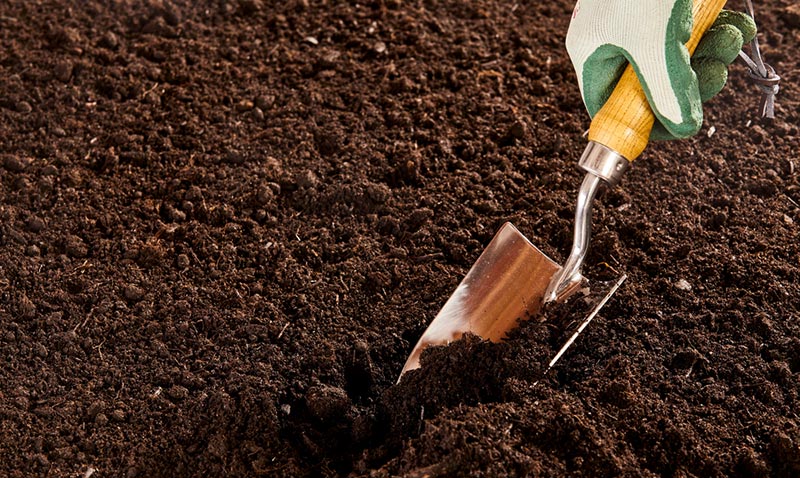How to Grow Turmeric (7 Expert Tips to Help It Flourish)
-
Ed Malaker
- Last updated:

Turmeric is a fantastic plant due to its great taste in many different foods, and it also has many health benefits1. So, if you are thinking about growing turmeric in your garden or home, keep reading as we list several tips and tricks to help your plants grow faster and healthier and produce a larger harvest.
Before You Begin
Garden or Pots
You can grow turmeric in indoor pots or outdoors in your garden. It grows best outside in zones 8–11, which are in the southernmost states and California. Those in other zones will likely do better growing the plants indoors in pots.
Tools and Materials
We recommend getting your tools and supplies together before you begin so you can focus on what you are doing instead of searching for items. Fortunately, you won’t need many supplies, only planting pots, fertilizer, turmeric rhizomes, and high-quality potting soil.
The 7 Tips to Grow Turmeric
1. Pick When to Plant

The first thing you will need to do when attempting to grow turmeric is deciding when you will plant it. Turmeric usually takes 7–10 months to be ready for harvest, so many experts recommend counting back 10 months from when the first frost usually occurs in your area if you will be growing it outdoors. You have more flexibility when growing indoors, but it can still be a good idea to follow the same schedule because the natural temperature and humidity will more closely resemble nature.
2. Choose Your Turmeric Rhizomes
You start to grow your turmeric by planting the rhizome of another. The rhizome is a small piece of the root and looks similar to ginger. You can usually find them at your local grocery store, but you will need to be careful with these because the store might treat them with a growth retardant so they don’t spout in the store, which might prevent them from ever sprouting. Choose plump rhizomes with plenty of bumps and green color at the ends, which is a good sign that they haven’t been sprayed. It might be easier to purchase untreated rhizomes from gardening centers, organic food stores, and other locations focusing on natural ingredients.
3. Prepare the Soil

Outdoor Growing
If you are planting your turmeric outdoors, we recommend breaking up the soil to a depth of at least 15 inches to ensure that there are no clumps or large rocks that will prevent the turmeric from growing correctly. You want the soil to drain well, so add sand, small pebbles, or vermiculite to help the water escape if it seems to get muddy when you water it. Turmeric requires plenty of nutrients, so adding compost and other organic material can help improve the soil, leading to a larger harvest.
Indoor Growing
If you are growing your turmeric indoors, you will need a big pot because it requires a large amount of space. Choose pots that are at least 12 inches deep and 12–18 inches wide, with larger pots being better. The turmeric plant can grow to more than 3 feet tall, so there must be plenty of room for the roots to grow. Choose a high-quality well-draining potting soil that contains compost or other nutrients that will help the turmeric grow quickly.
4. Prepare the Rhizome
Prepare your rhizome by cutting it into several pieces, each having two to three buds.
5. Plant the Rhizome

Outdoor Growing
Lay each piece of the rhizome on the ground, about 20 inches apart, and cover them with about 1 inch of soil.
Indoor Growing
Place each piece in a separate pot, and cover it with approximately 1 inch of soil.
6. Provide Water and Sunshine
With the rhizomes planted, water frequently, and if growing indoors, place the pots in an area where they will receive plenty of sunshine.
7. Fertilize

Turmeric is a heavy feeder that requires plenty of nutrients to grow strong and produce a large harvest. We recommend using an organic liquid fertilizer for root crops and following the instructions carefully until the turmeric is ready.
Other Tips and Tricks
- When you’re growing turmeric indoors, it can be helpful to put a heating pad under the pots to help raise the soil temperature to 85–95 degrees Fahrenheit, which is the ideal soil temperature for these plants.
- When you’re growing turmeric outdoors, consider building a temporary greenhouse around them during the cooler months, which will help increase the ambient temperature. This will also enable you to add heating.
- Keep your turmeric above 68 degrees Fahrenheit to prevent slow growth or rot, which can significantly reduce your harvest.
- Turmeric likes direct sunlight, but on the hottest days, it can scorch the leaves, so placing the plant where it will get afternoon shade is ideal.
- Keep the soil moist but not soggy, and mist the leaves frequently to help replicate their natural tropical environment.
Conclusion
Growing turmeric is not difficult and only requires choosing a good rhizome, slicing it into smaller pieces, and then planting those in nutrient-dense well-draining soil. The hardest part for many people will be keeping the soil temperature high enough to suit these tropical plants, but people in the northern states should have success if they keep the plants indoors in large pots where the temperature will stay above 68 degrees Fahrenheit. Heating pads and greenhouses can also help raise the soil temperature, and organic liquid fertilizer will ensure that the plants get the nutrients that they need to produce a good harvest.
Featured Image Credit: MYCCF, Pixabay
Contents

